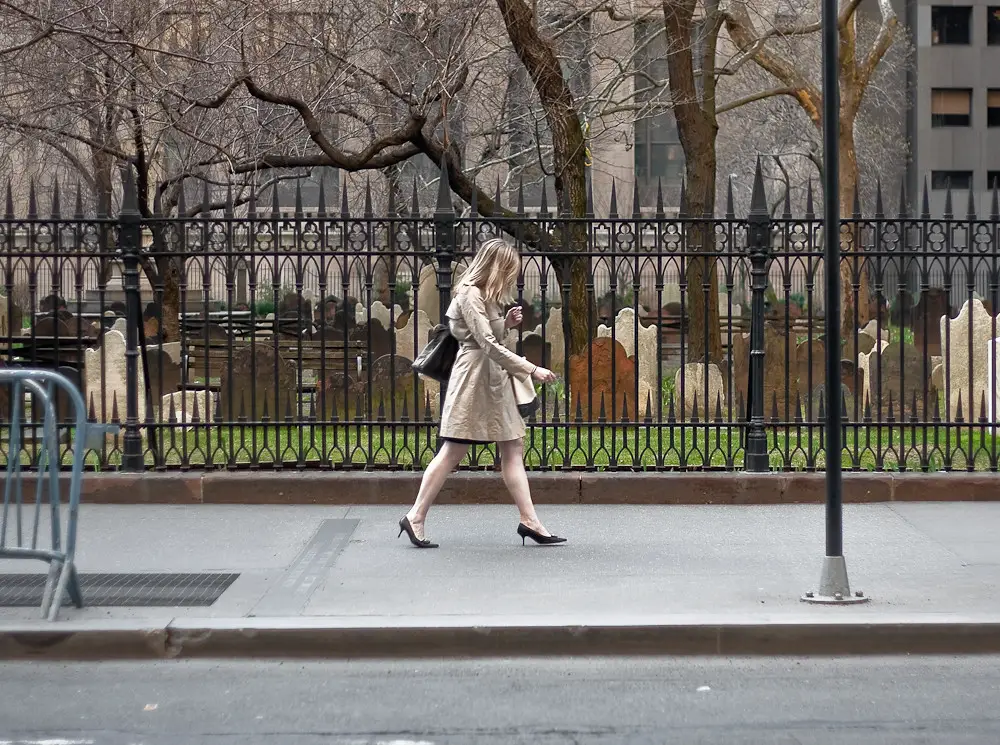There’s been plenty of research into how walkable streets and neighbourhoods get more people walking. However what we’re less sure about is: Who are the people that choose to walk more?
In an attempt to answer this question, Transport for London have released new research with some interesting findings. By combining a large travel survey with Londoners demographic data, the study attempted to identify which types of people walk more as part of their everyday lifestyle.
Women walk more
They found that, on average, women make more journey stages on foot than men (females walked 4.1 journey stages while males only walked 3.8). However one consolation for any overly-competitive male is that the study also found that women walk a shorter distance per stage than men. It seems that men walk even less once they are in a relationship and have children, while for women it’s the exact opposite, they walk more once they have children. Perhaps this is partly explained by the fact that, on average, women are still more likely than men to stay-at-home to look after children, including journeys like walking to school.
Younger people (aged 20 – 44) walk more stages per day than older people, with young women (aged 20 – 44) walking the most. This rings true with recent reports that have found that Generation Y (born between 1979 and 2000) are looking to live in walkable urban locations and are embracing the walkable lifestyle.
Being single is good for you
The study also found that single adults walked more than people in a relationship (regardless of whether they had children or not). So we can now add ‘getting more exercise’ to the list of benefits of being single!
Urban location was also found to be key, with ‘Central’ Londoners walking more than ‘Inner’ Londoners and a lot more than those in the ‘Outer’ suburbs. As the built environment becomes more dense, public transport more frequent and driving is more hassle, it seems that people walk more. Unsurprisingly car ownership reduces walking (people without a car made 4.5 journey stages on foot, while those with 2 or more cars only walked 3.2 journey stages). In contrast to this, is the fact that the richer people are, the more likely they are to walk, despite having the option of driving. The research team put this down to ‘narrower travel horizons amongst those on lower incomes’.
Marketing walking
But why are Transport for London so interested in peoples walking behaviours? It seems that one reason is to better target marketing in order to get people to change their behaviour and walk more. The study even utilises similar approaches that big business use for customer marketing, creating target groups for future behaviour change programmes. This approach found that demographic groups with names like ‘Active Urbanites’ and ‘Cosmopolitan Lives’ (32% of Londons population) were walking more than the average Londoner. It seems that factors such as your stage in life (young and single) and lifestyle (living in a very urban area) influence how much you walk.
But peoples attitudes to walking also seem to change as they progress through life, with people classed as ‘Active Urbanites’ and ‘Cosmopolitan Lives’ much more likely to make positive statements about walking such as:
“Walking is a method of transport that I would want to be seen using.”
While people with families and on lower incomes were more likely to agree with negative opinions on walking, including:
“Walking is only for people who can’t afford other ways of getting there.”
This highlights an opportunity for Transport for London to try to change attitudes and behaviours in these groups. It would also be interesting to see how this geo-demographic data compares to the walkability of local streets using a dataset such as the Walkonomics London map.
While this study has drilled down a bit a deeper into the factors behind walking behaviour, the real test will be to see how governments in London and other big cities use this information to get more people walking.
Photo: anitakhart


